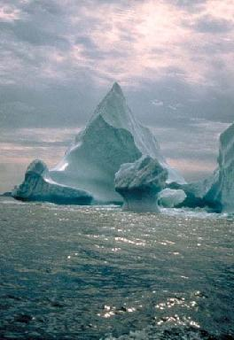NOAA/WDS Paleoclimatology - Brazil Margin Benthic Foraminiferal B/Ca data from 50-150 ka
This archived Paleoclimatology Study is available from the NOAA National Centers for Environmental Information (NCEI), under the World Data Service (WDS) for Paleoclimatology. The associated NCEI study type is Paleoceanography. The data include parameters of paleoceanography with a geographic location of South Atlantic Ocean. The time period coverage is from 157000 to 51000 in calendar years before present (BP). See metadata information for parameter and study location details. Please cite this study when using the data.
- Cite as: Garity, M.; Lund, D.C. (2023-11-15): NOAA/WDS Paleoclimatology - Brazil Margin Benthic Foraminiferal B/Ca data from 50-150 ka. [indicate subset used]. NOAA National Centers for Environmental Information. https://doi.org/10.25921/2tjj-h043. Accessed [date].
- Please refer to Credit tab for full citation information.
- doi:10.25921/2tjj-h043
- noaa-ocean-38760
- NCEI DSI 1200_02
- NCEI DSI 1200_01
noaa-ocean-38760
| Search Data |
|
| Download Data |
|
| Distribution Formats |
|
| Ordering Instructions | Contact NCEI for other distribution options and instructions. |
| Distributor | NOAA National Centers for Environmental Information
ncei.info@noaa.gov |
| Dataset Point of Contact | NOAA National Centers for Environmental Information
ncei.info@noaa.gov |
| Dataset Point of Contact | Data Center Contact
NOAA World Data Service for Paleoclimatology 828-271-4800 paleo@noaa.gov |
| Coverage Description | Date Range: 157000 cal yr BP to 51000 cal yr BP; |
| Time Period | -155050 to -49050 |
| Spatial Bounding Box Coordinates |
N: -27.49
S: -27.7667
E: -46.0333
W: -46.33
|
| Spatial Coverage Map | |
| General Documentation |
|
| Associated Resources |
|
| Publication Dates |
|
| Data Presentation Form | Digital table - digital representation of facts or figures systematically displayed, especially in columns
|
| Dataset Progress Status | Complete - production of the data has been completed |
| Data Update Frequency | Data update frequency not available |
| Supplemental Information |
ABSTRACT SUPPLIED BY ORIGINATOR: Despite decades of research, the cause of deglaciations is not fully understood, leaving a critical gap in our understanding of Earth's climate system. During the most recent deglaciation (Termination I (T I)), abrupt declines in the stable carbon isotope ratio (δ13C) of benthic foraminifera occurred throughout the mid-depth (1,500–2,500 m) Atlantic. The spatial pattern in δ13C anomalies was likely due to Atlantic Meridional Overturning Circulation (AMOC) weakening and the accumulation of respired carbon, which also yields negative excursions in carbonate ion concentration ([CO3 2−]). To investigate whether a similar pattern occurred during prior deglaciations, we developed δ13C and [CO3 2−] records from 1,800 and 2,300 m water depth in the Southwest Atlantic spanning the last 150 ka. The new records reveal negative δ13C and [CO3 2−] anomalies during Termination II (TII) and the smaller deglaciations of Marine Isotope Stages (MIS) 4/3, 5b/a, and 5d/c, suggesting AMOC weakening is a common feature of deglaciation. The anomalies are more pronounced in the shallower core following MIS 2, 4, and 6 and in the deeper core following MIS 5b and 5d. The depth-dependent pattern is most likely due to shoaling of Northern Source Water during glacial maxima and deepening during interglacial intervals. Comparison of [CO3 2−] records from TI and TII suggests similar levels of carbon accumulation in the mid-depth Atlantic. The Brazil Margin δ13C and [CO3 2−] results indicate the AMOC plays a key role in the series of events causing deglaciation, regardless of differences in orbital configuration, ice volume, and mean global temperature.
|
| Purpose | Records of past climate and ocean circulation derived from marine sediments. Parameter keywords describe what was measured in this dataset. Additional summary information can be found in the abstracts of papers listed in the dataset citations. |
| Dataset Citation |
|
| Cited Authors |
|
| Originators |
|
| Publishers |
|
| Theme keywords | Global Change Master Directory (GCMD) Science Keywords
|
| Data Center keywords | Global Change Master Directory (GCMD) Data Center Keywords
|
| Place keywords |
|
| Use Constraints |
|
| Access Constraints |
|
| Fees |
|
Last Modified: 2024-02-06
For questions about the information on this page, please email: ncei.info@noaa.gov
